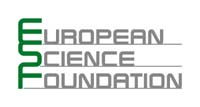Workshop on referential hierarchies in three-participant constructions

About the Workshop
Referential hierarchies have been the subject of discussion ever since they were first proposed by Silverstein (1976) and Comrie (1981). Today, a large body of research is available addressing issues such as the precise nature of the factors featuring in the hierarchies, the interrelations between these factors and their values, and functional motivations behind referential hierarchies. Recent years have also seen an increased interest in the effects of referential factors on the expression of three-participant events (Bakker & Siewierska 2007; Haspelmath 2004, 2007; Heine & König 2010; Malchukov, Haspelmath and Comrie 2010+, Siewierska 2003; Kittilä 2006, 2008).
Nonetheless, a large gap still exists in terms of empirical data. There is an acute lack of in-depth studies of individual languages and language families, and of frequency data based on extensive corpora of spoken language (cf. Bresnan et al. 2007). Further research areas in need of expansion include:
- the effects of referential hierarchies on case, agreement, and word order;
- the effects of different lexical verbs or verb classes on the encoding of three-participant events (cf. Levin & Rappaport Hovav 2008), and
- the effects of language contact and language change on these phenomena.
We expect new data on these topics to challenge our present theoretical and typological understanding of the nature and workings of referential hierarchies in the morphosyntax of the world's languages in general, and three-participant constructions in particular (cf. Bickel 2008, Bickel & Witzlack-Makarevich 2008).
References
Bickel, B. 2008. On the scope of the referential hierarchy in the typology of grammatical relations. In Corbett, G.G. & M.Noonan (eds.) Case and grammatical relations: papers in honor of Bernard Comrie. Amsterdam: Benjamins. pp. 191 - 210.
Bickel, B. & A. Witzlack-Makarevich, 2008. Referential scales and case alignment: reviewing the typological evidence. In Malchukov, A. & M. Richards (eds.) Scales, 1-37. Leipzig: Institut für Linguistik.
Bresnan, J. et al. Predicting the dative alternation. In G. Bouma et al. (Eds.): Cognitive foundations of interpretation. Amsterdam: KNAW. pp. 69-94.
Comrie, B. 1981. Language universals and linguistic typology. Chicago: University of Chicago Press.
Haspelmath, M. 2003. Explaining the Ditransitive Person-Role Constraint: a usage-based account. Constructions 2/2004, 49 pp. (free online journal, University of Düsseldorf)
Haspelmath, M. 2007. Ditransitive alignment splits and inverse alignment. Functions of Language 14.1: 79-102. Special issue on ditransitives edited by A. Siewierska & W. Hollmann.
Heine, B. & Ch. König 2010: On the linear order of ditransitive objects. Language Sciences 32:1, 87-131.
Kittilä, S. 2006. The woman showed the baby to her sister. On resolving humanness-driven ambiguity in ditransitives. In: Kulikov, L. et al. (Ed.s): Case, valency and transitivity. Amsterdam: Benjamins. pp. 483-514.
Kittilä, S. 2008. Animacy effects on differential Goal marking. Linguistic Typology 12, 234-268
Levin, B. & M. Rappaport-Hovav 2008. The English dative alternation: the case for verb sensitivity. Journal of Linguistics 44, 129-167.
Malchukov, A. . M. Haspelmath, and B Comrie (Eds.) 2010+. Studies in ditransitive constructions. Berlin: Mouton de Gruyter.
Siewierska, A. 2003. Person agreement and the determination of alignment. Transactions of the Philological Society. 101.2, 339-370.
Siewierska, A. & D. Bakker 2007. Bound person forms in ditransitive clauses revisited. Functions of Language 14.1:103-125. Special issue on ditransitives edited by A. Siewierska & W. Hollmann.
Silverstein, M. 1976. Hierarchy of features and ergativity. In Dixon, R. M. W. (ed.) Grammatical Categories in Australian Languages. New Jersey: Humanities Press. pp. 112-171.
| Accommodation & Travel | Contact Us |

Tel: +44 (0) 1524 593045 Fax: +44 (0) 1524 843085

